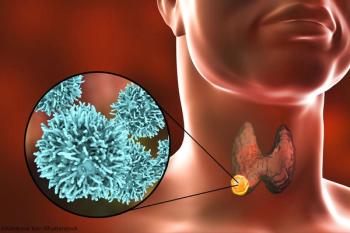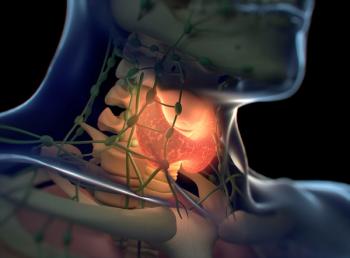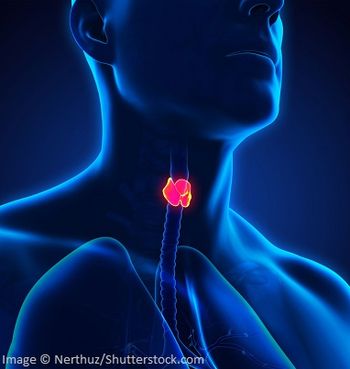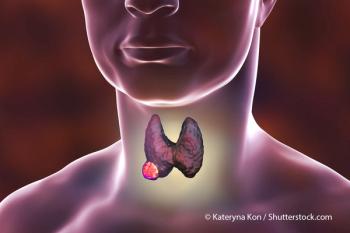
Long-Term Data Validate Low-Dose I-131 for Low-Risk Thyroid Cancer
Five years after treatment, low-dose postsurgical radioiodine (I-131) ablation for low-risk thyroid cancer offers outcomes equivalent to those seen following higher-dose ablation, according to a long-term follow-up analysis by French researchers.
Five years after treatment, low-dose postsurgical radioiodine (I-131) ablation for low-risk thyroid cancer offers outcomes equivalent to those seen following higher-dose ablation, according to a long-term follow-up analysis by French researchers, presented at the 86th Annual Meeting of the American Thyroid Association (ATA), held September 21–25 in Denver, Colorado, and
“The long-term recurrence rate is low and does not seem dependent on the strategy of initial ablation,” reported lead study author Martin Schlumberger, MD, of the Institut Gustave Roussy in France, and coauthors.[1]
The authors had previously demonstrated in a randomized phase III trial, ESTIMABL-1, that among patients with low-risk differentiated thyroid carcinoma enrolled between 2007 and 2010, high- and low-dose I-131 radioiodine (3.7 vs 1.1 GBq) offered equivalent ablation rates at 8 months, following total thyroidectomy and preparation with either prolonged thyroid hormone withdrawal or recombinant human thyrotropin (rhTSH).[2]
The new analysis included outcome data for 711 patients still on trial at a median follow-up of 62 months, at which time no thyroid cancer–related deaths had been reported and 98.5% of the patients had no evidence of disease.
Twenty-seven patients had exhibited persistent disease at the time of ablation; 16 of these patients had undergone additional I-131 and 8 had undergone surgery. At last follow-up, 2 had persistent disease but 25 had achieved complete remission, the authors reported.
While ablation protocols did not predict outcome, better outcomes were associated with low stimulation of serum (Tg < 5 ng/mL) at the time of ablation.
“These data validate the use of 1.1 GBq following rhTSH for post-operative ablation in low-risk thyroid cancer patients, when ablation is indicated,” the authors concluded.
References
1. Schlumberger MJ, Borget I, Catargi B, et al. Short call oral abstract 6. ESTIMABL1: Long Term Outcome Validates the Use of 1.1GBQ/RHTSH for Ablation in Low Risk Thyroid Cancer Patients. Thyroid. 2016;26(suppl 1).
2. Schlumberger M, Bogdan C, Borget I, et al. Strategies of radioiodine ablation in patients with low-risk thyroid cancer. New England Journal of Medicine. 2012;366:1663–1673.
Newsletter
Stay up to date on recent advances in the multidisciplinary approach to cancer.

















































































